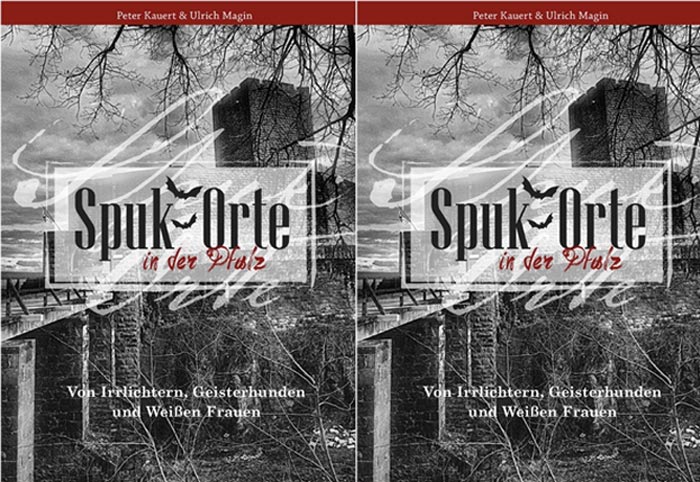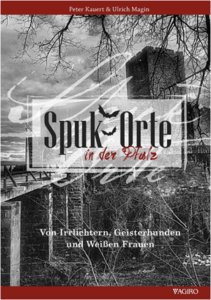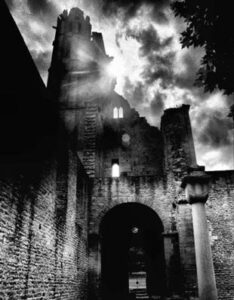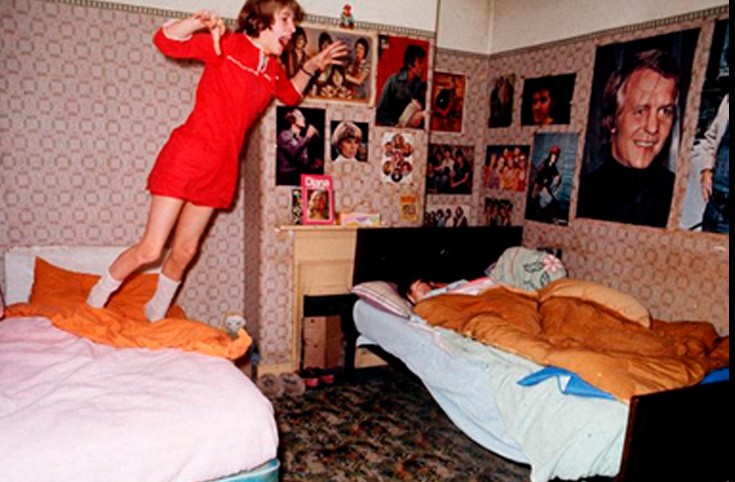A new illustrated book explores these intriguing stories….
In 1938 a gentleman from Oberdonau in Germany wrote to Times newspaper in Great Britain having learned from the German press that there were reputedly 150 haunted castles in England that were proving difficult to sell. He stated:
“ I am very interested in these ghosts and guarantee to ” lay ” them if one ‘ of the owners would give me the run of the castle and are willing and pay expenses of myself and helpers. Fee would only be payable after successful conclusion of affair.’
Please let me have the address of some person afflicted with a haunted house
Thanking you anticipation, I am Yours
Franz Jungbauer
(Published in The Times (London) 28 July 1938)
In fact Herr Jungbauer would only have needed to look closer to home as demonstrated by a new book Spuk Orte in der Pfalz. Von Irrlichtern, Geisterhunden und Weißen Frauen (2022) (in English ‘Haunted Places in the Palatinate: Of will-o’-the-wisps, ghost dogs and white ladies’) by Ulrich Magin illustrated by Peter Kauert demonstrates.
This is because more than a hundred castles exist in the Palatinate in Germany alone, with a high percentage of them reputedly haunted. Many were ruined during t the Palatinate War of Succession (or ‘Peasants’ War’) between 1688-1697. Those surviving today are rich in stories and traditions of hauntings which are explored in this lavishly illustrated book. A wealth of ghostly heritage is revealed, including sites where people claim to have experienced a wide variety of spooky phenomena in the past as well as a number which still generate remarkable ghost reports today.
Some clearly folkloric tales can be ascribed to functional legends with a social message. For example, frightening rumours surround ‘the Monster Lake’ in the Leininger Sporn high above Leistadt. This shallow moorland pond with a constantly fluctuating water level is surrounded by thick forests is clearly a place posing a danger to the reckless and careless. Tradition avers the spirit of a forest woman prowls around at midnight ready to seize the unwary, particularly children, and drag them into the depths of the lake. Such stories are universal in tradition and operate, among other things, as an effective deterrent for keeping minors away from dangerous stretches of water.
However, other stories are less easy to ascribe to folklore and fireside tales. As the authors assure us, there are castles and rocks across the Palatinate which are actively haunted even today. The Palatinate is landscape shaped and ruined over time by once powerful and violent men, many of the ghosts which walk are female, the predominant form being the ‘woman in white’ and of which this region contains a high concentration. Known as the ‘Weisse Frauen’ the White Lady manifests at many castles sites in the Palatinate, often at times of the death of a great prince or landowner, rather like the Irish banshee (similar stories are told in Bohemia and the castles of the Lords of Rosenburg).
Such ghosts are archetypal being usually encountered in lonely spots and ruins or crossing remote highays. They w may be considered a European-wide phenomenon. Widely known in England, Wales and in France (where they are known as ‘Dame Blanche’) they also manifest in Sweden, across Spain and in parts of Latin America. Although seemingly the stuff of legend, there are many people who have encountered her manifestations in recent years.
Meanwhile other apparitions are still being experienced by those who visiting sites in the Palatinate and by residents who dwell in places still remaining habitable. Some apparitions appear as shadowy forms whilst eerie noises are heard emanating from forests after dark. Others are felt rather than seen, often accompanied by a fall in temperature.
One site offering an opportunity for prospective ghost hunters is Ruin Jaghause at Elmstein. It is the remains of a hunting lodge originally built in 1839 and then quickly abandoned because of it being badly haunted. The apparition was man wearing a strange and distinctive hat seen riding a phantom grey horse around the lodge. Even worse, ‘sometimes he grinned through the window into the living room’ to the terror of occupiers. So disturbing did manifestations become the last forester left it in either 1833 or 1850 (accounts differ) whereafter the lodge was abandoned and left standing derelict to the mercy of the elements.
The most distinctive of German ghosts, the Poltergeist is also well represented. For instance Fussgonheim Palace, built in 1730, has a poltergeist that moves between rooms. Also noted is Villa Ludwigshohe, the home of Bavarian King Ludwig I (1786 – 1868) who took an interest in the poltergeist infestation of the Munich Inn Zum Rockerlgarten and the Haidenau Palace in 1840. The King had his officials regularly brief him on events which included typically poltergeist tricks of strange noises, inexplicable stone throwing and strange moans and sighs. After his abdication in March 1848 the King spent every summer at the Villa but whether he engaged in further ghost hunts the newspapers maintained a discrete silence.
Altogether this book is a visual and literary delight and deserves a wide readership both in Germany and beyond by all lovers of the mysterious and the supernatural and for the opportunities it points to for further investigations.
Book: Spukorte in der Pfalz Von Irrlichtern, Geisterhunden und Weißen Frauen (2022)
Authors Ulrich Magin and Peter Kauert (photographer)
Publisher: Agiro-Verlag, Neustadt
ISBN 978-3-946587-41-5 (hardcover)
https://www.amazon.co.jp/Spukorte-Pfalz-Irrlichtern-Geisterhunden-Weissen/dp/3946587410







